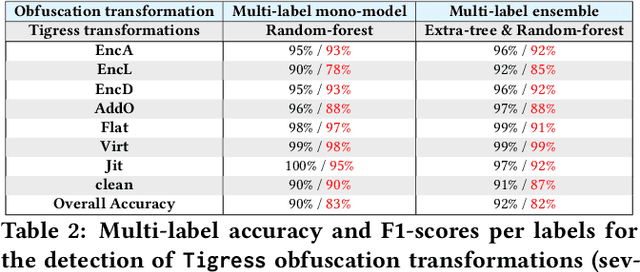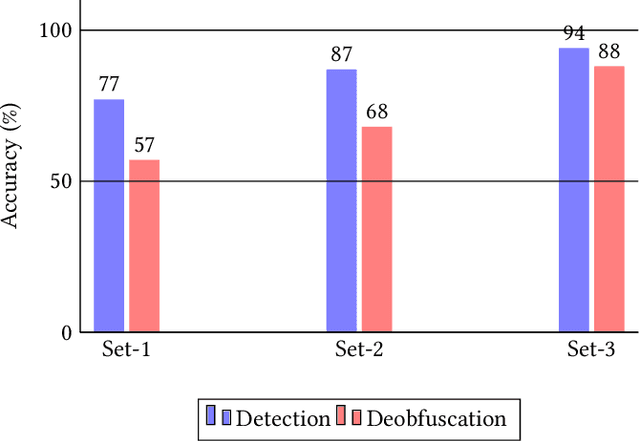Philippe Elbaz-Vincent
IF
Fine-Grained Static Detection of Obfuscation Transforms Using Ensemble-Learning and Semantic Reasoning
Nov 18, 2019



Abstract:The ability to efficiently detect the software protections used is at a prime to facilitate the selection and application of adequate deob-fuscation techniques. We present a novel approach that combines semantic reasoning techniques with ensemble learning classification for the purpose of providing a static detection framework for obfuscation transformations. By contrast to existing work, we provide a methodology that can detect multiple layers of obfuscation, without depending on knowledge of the underlying functionality of the training-set used. We also extend our work to detect constructions of obfuscation transformations, thus providing a fine-grained methodology. To that end, we provide several studies for the best practices of the use of machine learning techniques for a scalable and efficient model. According to our experimental results and evaluations on obfuscators such as Tigress and OLLVM, our models have up to 91% accuracy on state-of-the-art obfuscation transformations. Our overall accuracies for their constructions are up to 100%.
Defeating Opaque Predicates Statically through Machine Learning and Binary Analysis
Sep 04, 2019



Abstract:We present a new approach that bridges binary analysis techniques with machine learning classification for the purpose of providing a static and generic evaluation technique for opaque predicates, regardless of their constructions. We use this technique as a static automated deobfuscation tool to remove the opaque predicates introduced by obfuscation mechanisms. According to our experimental results, our models have up to 98% accuracy at detecting and deob-fuscating state-of-the-art opaque predicates patterns. By contrast, the leading edge deobfuscation methods based on symbolic execution show less accuracy mostly due to the SMT solvers constraints and the lack of scalability of dynamic symbolic analyses. Our approach underlines the efficiency of hybrid symbolic analysis and machine learning techniques for a static and generic deobfuscation methodology.
 Add to Chrome
Add to Chrome Add to Firefox
Add to Firefox Add to Edge
Add to Edge